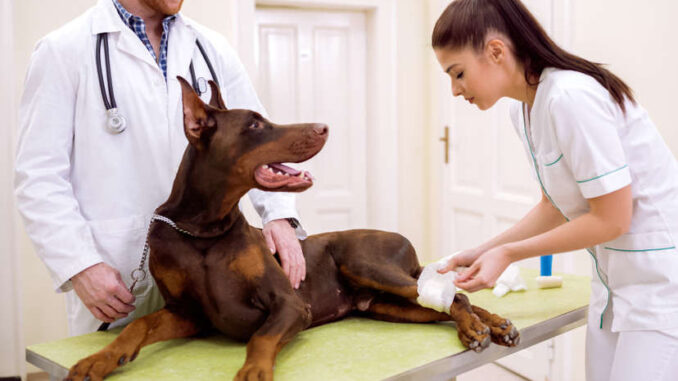
This article was updated on May 9th, 2023
In our clinic, I see dogs limping on a daily basis; it’s an all-too-common problem. Many people assume the worst, but a back-leg limp in dogs isn’t always a sign of something serious. In fact, the vast majority of cases I see are down to a mild issue that resolves itself within a few days. However, it’s important to be aware that there are more serious causes of back leg limping and so owners need to know the signs to look out for and when their dog needs to see the vet.
How do I find out if my dog’s back leg limping is serious?
Many pet owners ask themselves this question when their furry friend is less than mobile. A canine’s back legs can suffer from a wide range of issues, some more serious than others. First of all, it’s important to realize that there are two different types of limp: Sudden onset and gradual onset.
Sudden onset limps can be caused by trauma or injury, such as a torn ligament or broken bone following a fall. Gradual onset limps are typically caused by a variety of more degenerative conditions, such as arthritis or hip dysplasia. The severity of the limp would vary based on the cause, and veterinary care is always strongly advised. The duration of the limp is a subjective matter and is tightly linked to the root of the issue.
How long is it OK for dogs to limp on their back legs?
When it comes to back-leg limping in dogs, various reasons could cause it. Pet owners should pay attention to the type of limp their dog is experiencing, whether it is a sudden onset or a gradual one. In the case of sudden onset limping, it can be okay to wait and monitor your dog for a few days provided the limp isn’t too severe – a severe limp would be described as one where your dog is holding their leg up and unable to put any weight through it – if this is the case then immediate veterinary attention is often necessary to prevent further damage. On the other hand, if the limping is gradual in onset, immediate veterinary attention may not be necessary but it’s still recommended to seek veterinary help if a limp has persisted for more than 2 weeks.
Signs that your dog’s limping is a reason to see the vet
It can be difficult to tell when a limping dog might need to see the vet, especially if they are stoic and have a high pain threshold. If your dog is displaying the following symptoms then take them to the vet as soon as you can:
• Consistent limping, especially if severe or getting worse over time
• Extreme pain when touched in the affected area
• Refusal to put any weight on the affected leg
• Swelling around the joints or limbs
• Excessive licking, biting, or chewing at the affected area
• Change in behavior, such as aggression or withdrawal
It’s always better to be safe than sorry when it comes to your pet’s health. If you think there’s any chance that their limping could be serious, then it’s best to take them to the vet as soon as possible. They will be able to diagnose the issue and provide appropriate treatment.
4 Top causes of back-leg limping in dogs
1. Trauma or Injury
Traumatic injuries can range from falls to getting hit by a car, and everything in between. The signs to look out for are an inability to put any weight on the affected leg, swelling of the joints or limbs, and intense pain when the affected area is touched. There may also be external wounds and bleeding and it’s important to ascertain whether there are any fractured bones. Trauma or injury often results in a sudden onset of moderate to severe limping.
Home remedies such as applying ice and keeping your pet still in a quiet environment can help with reducing the severity of the limp. Veterinary treatments for trauma can range from pain medications to surgery, depending on the severity of the injury and the cost of treatment would vary based on the type of injury and treatment required, but it’s usually in the hundreds of dollars. However, if surgery is required this cost could be substantially more, even thousands of dollars. The prognosis would also depend on the severity of the injury and timely treatment.
2. Muscle strain or sprain
Strains and sprains can occur due to excessive exercise, over-exertion, or due to sudden movements that the dog isn’t used to. The signs of a muscle strain or sprain are limping, swelling of the joints or limbs, and difficulty in walking. Limping due to a muscle strain or sprain is often sudden in onset and can range from mild to severe. Home remedies such as applying a cold compress to the affected area can help to reduce swelling, and rest is important for the healing process.
Below is a helpful video of a veterinarian explaining how to check a dog’s leg for strains or sprains:
Veterinary treatments would include pain medications and anti-inflammatories, depending on the severity of the strain or sprain, and may include physical therapy. The cost of treatment would vary based on the severity of the issue and any treatments required but is often in the hundreds of dollars. The prognosis of muscle strain and sprains depends on how quickly the issue is treated and its severity.
3. Arthritis
Arthritis is a degenerative joint disease that can be caused by aging, genetics (hip dysplasia), obesity, or previous injury. The signs to look out for are limping, difficulty in walking, stiffness, trouble going up or down stairs or getting on and off furniture, and an unwillingness to move or exercise. Lameness due to arthritis is usually gradual onset. Home remedies such as supplements, joint-friendly diets, heated beds, and regular exercise can help to manage the symptoms. Veterinary treatments for arthritis include pain medications and anti-inflammatories, as well as joint therapy if needed. The cost of treatment is often ongoing and would vary based on the severity of the issue and any treatments required but is often in the hundreds of dollars. The prognosis for arthritis depends on how quickly it is caught and treated, and its severity.
4. ACL rupture
ACL (anterior cruciate ligament) rupture is one of the most common causes of back-leg limping in dogs. The signs to look out for are sudden onset lameness on one side, an inability to put any weight through the affected leg, difficulty getting up or down stairs, and difficulty getting on or off furniture. Rest and limiting activity can help with reducing inflammation, but veterinary treatment (usually surgery) is often required. Surgery to repair a ruptured ACL can range in cost from several hundred dollars to thousands of dollars, depending on the severity of the injury. The prognosis for an ACL rupture depends on how quickly it is treated and its severity.
Bone cancer (osteosarcoma): Bone cancer is a malignant tumor that can affect any bone in the body. It tends to occur more commonly in larger breeds and typically affects large bones such as the femur, humerus, and ribs. The signs to look out for are lameness on one side, swelling of the affected bone, and difficulty walking. Veterinary treatment for bone cancer would include surgery, chemotherapy, or radiation therapy to remove the tumor and reduce the pain. Amputation of the affected limb is sometimes necessary in extreme cases. The cost of treatment would vary depending on the severity and location of the tumor, but can often be in the thousands of dollars. The prognosis for bone cancer depends on the type, size, and location of the tumor and how quickly it is treated.
How to help your dog at home
There are some steps an owner can take to help a dog who is limping on its back legs. It is important to ensure the dog is not put in any situation that could worsen the condition, such as excessive activity or running up and down stairs. If needed, it can be helpful to provide assistance such as carrying the dog up and down stairs, or helping them stand up and lay down. If the dog appears in pain, providing cold compresses or a heating pad on the affected area can help to reduce inflammation. Additionally, offering your dog soft bedding and keeping them off slippery surfaces can help to reduce the strain on their joints.
It is also important to ensure your dog has plenty of fresh water available and that they are still eating and drinking as normal. Consulting with a veterinarian is highly recommended as soon as possible to ensure the underlying cause of the limping is identified and treated. Even if your dog does not seem to be in any pain, it is still important to have them checked out by a veterinarian to rule out any underlying issues that could be causing the limping. This will help ensure your dog can make a full recovery and remain healthy and active.
How will a veterinarian diagnose a back-leg limp?
A veterinarian will typically take a full history of the dog’s health and any potential causes for limping, such as recent falls or injuries. Additionally, the veterinarian will perform a physical examination and may take X-rays to get a better look at the affected area and rule out any underlying issues such as fractures or arthritis. Depending on the results of the physical examination and imaging, a veterinarian may recommend further tests such as blood work, urine tests, or joint fluid analysis. Once the underlying cause of the limping is determined, a veterinarian can then recommend the best course of action to help the dog make a full recovery.
How can I help prevent future issues?
There are several proactive steps owners can take to help prevent future issues with their dog’s back legs. It is important to ensure they are getting adequate exercise, but not too much so as to cause strain on their joints. Additionally, it is important to make sure they are eating a healthy diet to maintain their weight and muscle tone. Supplements such as glucosamine and chondroitin can also help to reduce joint inflammation and support cartilage health. Finally, it is important to regularly monitor your dog’s back legs for any changes in gait or lameness, and to consult with a veterinarian at the first sign of any issues. Taking these steps can help ensure your dog stays healthy, happy, and active for years to come!
Related posts about dogs limping:
 Dog Limping & Licking Their Paws: Our Vet Explains - Pet parents often encounter a variety of health issues with their dogs, and among them, paw licking and limping are… [...]
Dog Limping & Licking Their Paws: Our Vet Explains - Pet parents often encounter a variety of health issues with their dogs, and among them, paw licking and limping are… [...]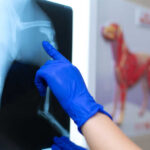 Dog Limping & Shaking: What Could Be Going On With Your Dog? - Pet parents often encounter a variety of health issues with their dogs, and among them, limping and shaking are common.… [...]
Dog Limping & Shaking: What Could Be Going On With Your Dog? - Pet parents often encounter a variety of health issues with their dogs, and among them, limping and shaking are common.… [...]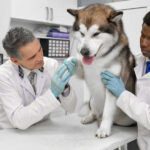 Dog Limps But Is Not in Pain: Top Reasons & What to Do - Just like in people, limping is a common issue in dogs. While limping can be due to a variety of… [...]
Dog Limps But Is Not in Pain: Top Reasons & What to Do - Just like in people, limping is a common issue in dogs. While limping can be due to a variety of… [...]Disclaimer: This website's content is not a substitute for veterinary care. Always consult with your veterinarian for healthcare decisions. Read More.


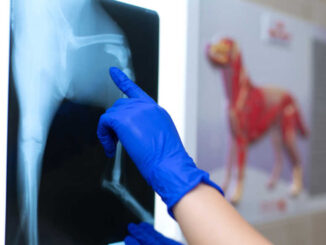
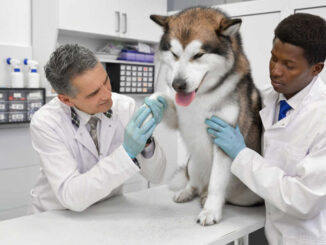

Be the first to comment